“The list is an absolute good. The list is life.
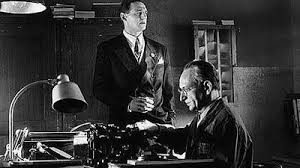
Screenplay by Steven Zaillian
“The list is an absolute good. The list is life.

Screenplay by Steven Zaillian
“What you have to understand is, four days ago he was only my brother in name. And this morning we had pancakes.”
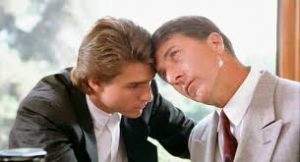
Screenplay by Ronald Bass & Barry Morrow
“They was giving me ten thousand watts a day, you know, and I’m hot to trot! The next woman takes me on’s gonna light up like a pinball machine and pay off in silver dollars!”
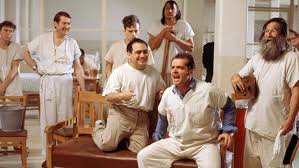
Screenplay by Lawrence Hauben & Bo Goldman
“They call me Mr. Tibbs!”
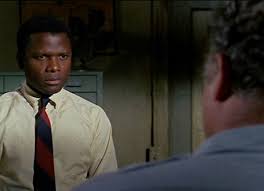
Screenplay by Sterling Silliphant
“Fasten your seat belts. It’s going to be a bumpy night.”

Screenplay by Joseph L. Mankiewicz
“Go ahead and shoot. You’ll be doing me a favor.”

Screenplay by Julius J. Epstein, Philip G. Epstein & Howard Koch
“Frankly, my dear, I don’t give a damn.”

Screenplay by Sidney Howard
I wrote this blog for Night Owl TV and it first appeared on their site on January 18, 2018. A link to that post and other Night Owl TV material can be found here.
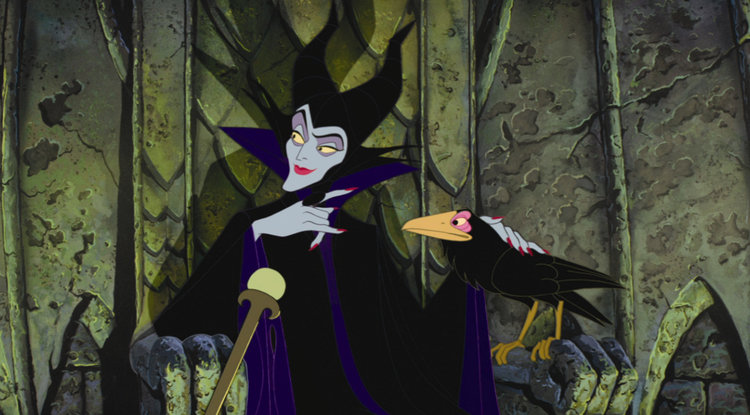
Maleficent and Diablo in Sleeping Beauty (1959)
Walt Disney Animation has been synonymous with family entertainment for close to 90 years. Ever since Mickey Mouse blew audiences away in Steamboat Willie, the first cartoon with synchronized sound, Walt Disney and the movie studio he left behind have consistently been a step ahead of everyone else when it came to creating family entertainment. This has been true, not only from a content point of view, but also in technology and the film making process as well. Disney was the first film maker to use synchronized sound in his cartoons. Decades later when other movie studios were shunning television fearing the competition that it posed to cinema, Disney embraced the new technology as another way to deliver content to his audience.
When Disney released Snow White and the Seven Dwarfs in 1937, a watershed moment in film making had occurred. Animation had been around since the dawn of film making itself, but no one had considered the idea of a feature length animated film. It seemed too labor-intensive and too expensive to be economically feasible. Making a movie one frame at a time? Requiring literally hundreds of artists and millions of drawings? In our CG (computer generated) world of today where we get saturated with several animated films per year, it might not seem like such a big deal to put out an animated feature. But no one had ever seen one in 1937. Walt Disney staked everything he had on it, and had it failed, we would be living in a vastly different world right now. Without a successful Snow White and the Seven Dwarfs, The Walt Disney Company would not be the single most dominant movie studio today. There likely would have been no Disneyland or Walt Disney World. There likely would have been no Don Bluth Studios (An American Tail, The Secret of Nimh) or DreamWorks Animation, as those studios spun off from people who made their mark originally with Disney.
However, Snow White wasn’t the most impressive thing that Disney did. Anyone can get lucky once. Between 1937 and 1970, the Disney Studio released 21 animated features. The Aristocats, released in 1970, was the last animated feature personally approved by Disney before his death. Many of these films are considered to be classics, and many of them have gone beyond that to become iconic. Which ones are the best? Here are our Top-10 Pre-1970 Disney Animated Features.
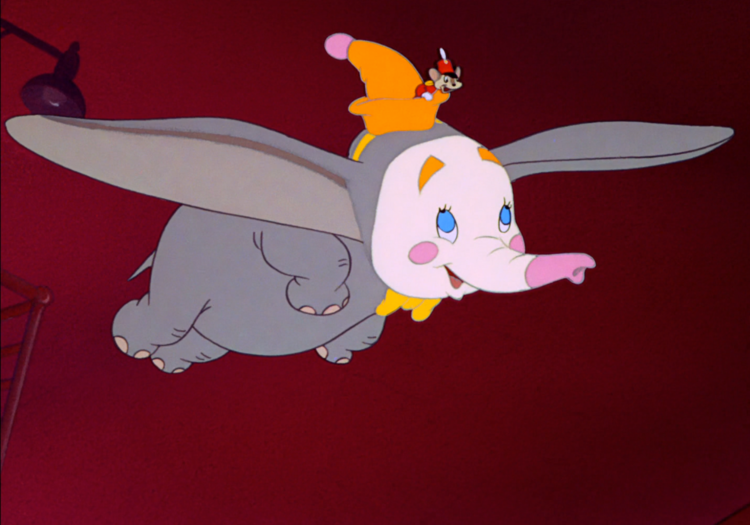
One of the reasons Disney’s early films resonated so much was because they were more than pretty pictures. These films had points of view and they had things to say. Yes, Dumbo is a film about a flying elephant, but it’s about much more than that. It’s an underdog story about taking supposed shortcomings and turning them into strengths. The Baby Mine scene in Dumbo when he goes to see his chained mother is simply one of the most famous, iconic, and tear-jerking scenes in the history of cinema.
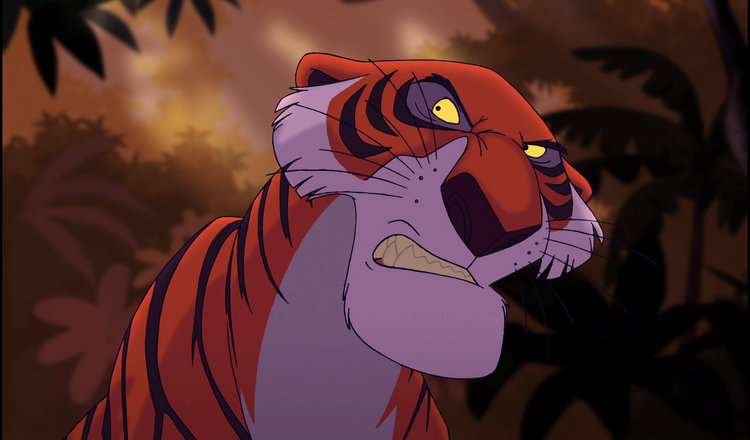
The Bare Necessities and I Wanna Be Like You are two of the most iconic and recognizable songs in the Disney canon. Along with great songs, this film has one of the best characters (Baloo) and one of the fantastic villains (Shere Kahn, voiced by George Sanders) of all the Disney films. The Jungle Book is also strong thematically with Mowgli the man cub wanting to stay in the jungle, but Bagheera the Panther knows he belongs in the man village. This story is about finding your own place in the world, and leaving behind what is comfortable in order to find where you really belong. With another iconic tear-jerking moment, this film tugs at the heart strings and tickles the funny bone with equal aplomb.
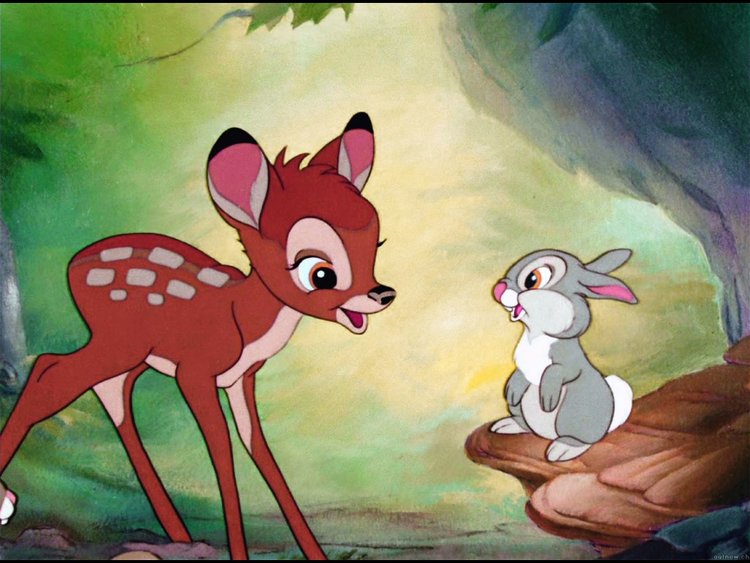
Bambi was regarded to be Walt Disney’s favorite film. Disney was a lifelong environmentalist, and Bambi is an unapologetic pro-environmental film making it way ahead of its time in that regard. With what might be the single saddest moment in Disney’s long and storied history, this is a much more serious film than any of the others on the list. Yes, there are some light and humorous moments scattered throughout the story, but they’re not what make this film memorable. This film is remembered for the scenes where Bambi’s mother is shot by a hunter; where Bambi vainly looks for her in the forest; and the forest fire at the end preceded by terrified animals hiding from hunters. If you haven’t watched Bambi recently, give it another look. You’ll be surprised at how intense it gets in the second half.

Another movie, another iconic moment… the Bella Notte scene where Lady and the Tramp savor a plate of spaghetti, and while sharing a single strand they end in an accidental kiss before Tramp offers her the last meatball? However, this film is so much more than that. The conflict in this film arises from Lady longing for the stability and comfort of a nice home and family while the Tramp longs for a carefree life free to do whatever he wants whenever he wants and not being tied down by a leash.

The film that started it all, and one of the most important films in the history of cinema, Snow White and the Seven Dwarfs is more than just an important film. It became an important film because it’s a great film. It has a great balance of heart and humor, and the witch is one of the great villains in the history of cinema. This film also has its own iconic moments and characters that have become a part of our cultural vernacular. It’s also worth mentioning that it’s the 10th highest grossing film in history when adjusted for inflation. When released in 1937, it made $8 million dollars when the average price of a movie ticket was 25 cents for an adult and 10 cents for children.

If Snow White created the Disney dynasty, then Cinderella rescued it. Coming out of World War II, with the international box office having been nonexistent for years, Disney was in desperate need of a hit. Going back to basics, and presenting audiences with a princess movie provided just that elixir. Some people (reasonably) criticize this film because the character of Cinderella is passive, and needs to constantly be rescued. However, it is her own wit and quick thinking that allow her to save herself at the end.

Peter Pan might be the most entertaining film on this list. It’s much more “cartoony” than most of the other films as it has more slapstick and cartoon humor. However, it also has great messages of understanding when it’s important to have fun and be imaginative, and when it’s important to calm down and be practical. It also has wonderful messages about what makes a real family. It may not have the deep down emotional moments that many other films on this list do, but it has a touching ending and is a fun watch.
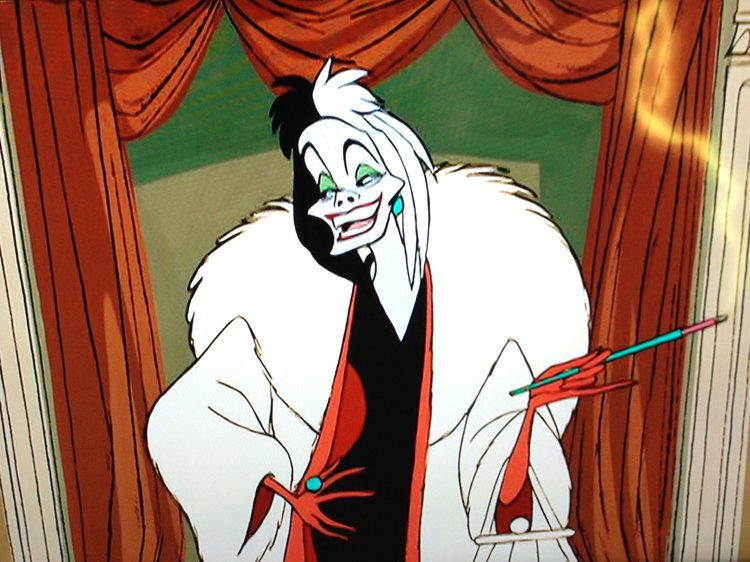
This film sneaks up on you with emotion while being one of the more entertaining films on the list. One Hundred and One Dalmatians hits a home run with its story and characters and may be known best for its iconic song (and villain) Cruella DeVille. It has one of the most exciting climaxes of any Disney film of its time as a direct result of the tension that the movie creates through its plot. It has one of the most intricately woven stories of any Disney movie ever and strikes the perfect balance between emotion and humor.
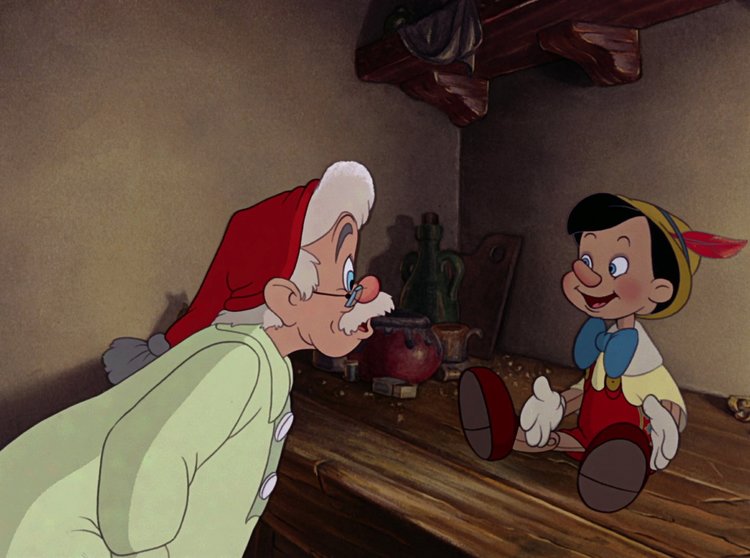
Pinocchio is just a brilliant film. While it has plenty of charm and humor, Pinocchio is largely known for the intense and dramatic moments that set it apart from other films. The dealings of Honest John and the Coachman are creepy and sinister. Stromboli is an over-the-top wicked character that locks Pinocchio in a bird cage and threatens to turn him into firewood. The scene where Lampwick turns into a donkey has given millions of kids nightmares over the past 75-plus years. And the scene where we think Pinocchio is killed by Monstro the Whale is tense, dramatic and yet another tear-jerker.
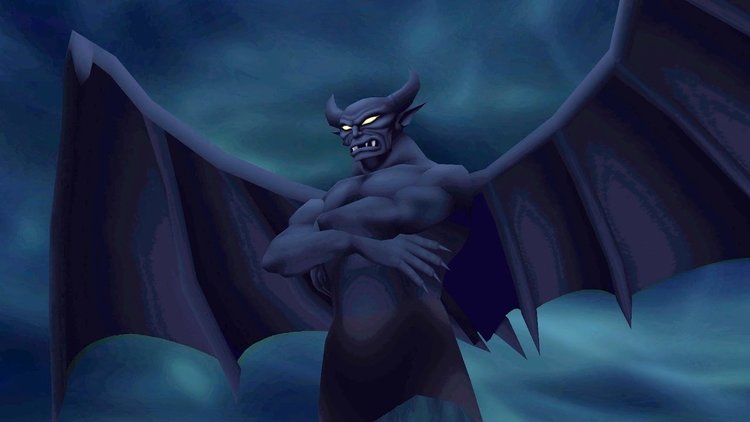
The ultimate experimental film, Fantasia is nothing short of a masterpiece. This is an anthology film, made up of individual shorts in order to create a feature. It doesn’t have one long narrative, and it uses a combination of classical music and animation to stimulate the eyes and the ears. This film is a feast for the senses. If you’re looking for a classic narrative, then this film isn’t for you. However, if you want to enjoy a piece of artistic expression that was created for its own sake, then this is a film you can appreciate. You can’t watch this film like you watch other films. This is a work of art, not a work of cinema.
You might be wondering where Sleeping Beauty is on this list. It would be on it if it were a top-11, but that just goes to show how amazing the first 21 films were. When a film like Sleeping Beauty can’t get on the list, the list must contain some impressive films, and this one does. The films on this list include some of the most important and influential films of all-time. These films helped create an art form that today is worth billions of dollars and touches almost every film in one way or another. Animation is more than just “kid stuff.” It is an art form and a style of film making that requires the most talented artists and film makers in the world. It may have started with a mouse, but it’s now the most popular form of film making in the world.
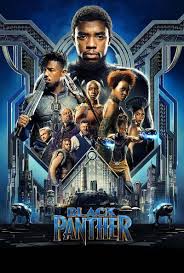
I’m going to get this out of the way immediately. I liked Black Panther, but I did not love it. I would rank it high in the Marvel pantheon but it was certainly not my favorite Marvel film. I’d have to digest it a little more, but my initial ranking would put it behind Iron Man, Guardians of the Galaxy, Captain America: Civil War, and Thor: Ragnarok. It does initially makes my top-5, but it is not number 1.
I saw the film on Presidents’ Day, and after sleeping on it and thinking about it, I’ve come to the following conclusions about the film. Like all of the Marvel films that came before it, it’s wildly entertaining with fun and energetic action sequences that build in intensity throughout the story. The story is structured well, and has a well-developed Hero’s Journey. It’s a professional, if unremarkably crafted story. The production design, art direction and VFX are what you would expect. They’re top-notch and, along with the action sequences, although they do sometimes combine make the film more “cartoony” than it ought to feel. But they create the eye-candy that draws the audiences to see the film.
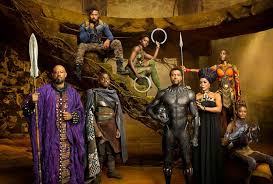
Another reason to see this film is the exceptional cast that director Ryan Coogler assembled. It’s a terrific mix of veteran heavy hitters (Angela Basset, Forest Whitaker, Martin Freeman) and the members of the newer generation that we’re sure to be watching for the next 30 years (Chadwick Boseman, Michael B. Jordan, Lupita Nyong’o, Danai Gurira, Daniel Kaluuya, etc.). The chemistry that was created in this cast served the film well and drew out performances that ranged from solid to excellent. For the most part, the acting wasn’t anything special in this film, but taken in their totality, all of the performances created a net positive impact on the film.
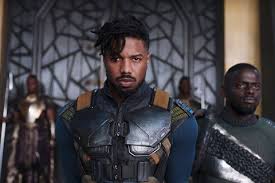
In particular, the performance of Michael B. Jordan as the prodigal Erik Killmonger, is an exceptional performance that needs special attention. His acting was not only exceptional, but brought a dynamic not previously seen in any Marvel film. His character had baggage. Now, many characters in the Marvel universe have baggage, but Killmonger’s baggage, though created through extraordinary circumstances, was baggage that made him relatable as a villain. This personal baggage made him who he is as a character and created in him the motivation that ultimately ends up driving the story. Coogler actually spent a solid amount of time giving us Killmonger’s backstory, and he presented it initially in small doses that teased us into wanting more and created tension and unease in how the story would progress.
His personal baggage also provided backbone to one of the primary thematic elements of the film, and that was the centuries-old struggle of African Americans for equality. Killmonger is a symptom in the disease that has afflicted that portion of the population, in that he grew up fatherless which embittered him as an adult. Adding to that bitterness was the conclusion that there were people who could have helped him and those like him, but did not. Unfortunately, Killmonger misunderstands his own strength. He used his bitterness to motivate himself to make something of himself, so that he didn’t need help from anyone else. He saw that there were others who got head starts, and he trained himself extra hard in order to make up the difference and ultimately pass those who started out ahead of him, and that’s one of the things that makes his story so tragic. Killmonger had the ability and strength to be anything that he wanted to be, but his bitterness and anger were weaknesses that he could not overcome. That makes Killmonger one of the deepest and most complex characters in the entire Marvel pantheon.
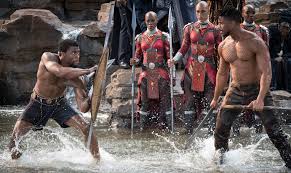
And now, here comes the “but”. My problem with Black Panther, and indeed many of the Marvel films, is that they’re wide, but they’re shallow. Whether it’s the directors of the films or the studio executives pulling the strings, there is always a lot of stuff crammed into each one of these films so we’re not able to dive into anything. There is very little depth in any Marvel film. Some of the Marvel films and characters like Captain America, David Banner/The Hulk, Peter Quill/Starlord, and Thor do have some depth. The surface is scratched a little deeper so that we as the audience are allowed some semblance of an emotional connection, but beyond that, there is very little in these films to become attached to. Marvel movies tend to be little more than eye-candy. I understand that the formula is working quite well for them, and that a lot of people continue to go and see their films and those films are practically printing their own money.
What the lack of depth will do, however, is it will cause many of these films go be forgotten over time. It’s already difficult to remember what events happened in which films. That’s a consequence of cramming so much material into each film. The films themselves become diluted. They’re as entertaining as they possibly can be, but stories are at their most effective when they evoke an emotional reaction from the viewer. I’ve watched many action films where I care about what happens and am emotionally affected by what happens in the story. I can think of a grand total of one time that happened in a Marvel movie, and it was in Black Panther and it was a scene with Killmonger.
Killmonger’s last scene, and in fact his last line of dialogue, give us such an emotional catharsis. I would love to see Marvel give us a film with half the characters of a typical Marvel film, and half to subplots, locations and action sequences. I would be happier to have fewer things to keep track of if it meant that we could take a deeper dive into what was left. That would be a lot more interesting and fewer components would also be a lot more memorable.
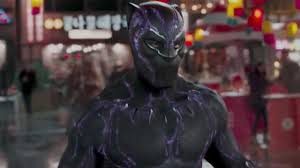
While not a perfect film, Black Panther should be applauded for attempting to do things that other Marvel films have not. Hopefully, the executives at Marvel and Disney will see that there is an appetite for thoughtfulness and emotions. I would tell them to give us more characters like Killmonger, who have the kind of depth that opens up thematic components to the stories and situations that will make us think and feel rather than just watch and react.
“Sometimes to love someone, you gotta be a stranger.”
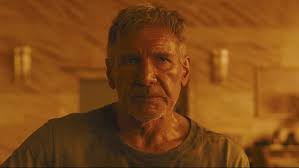
Screenplay by Hampton Fancher & Michael Green